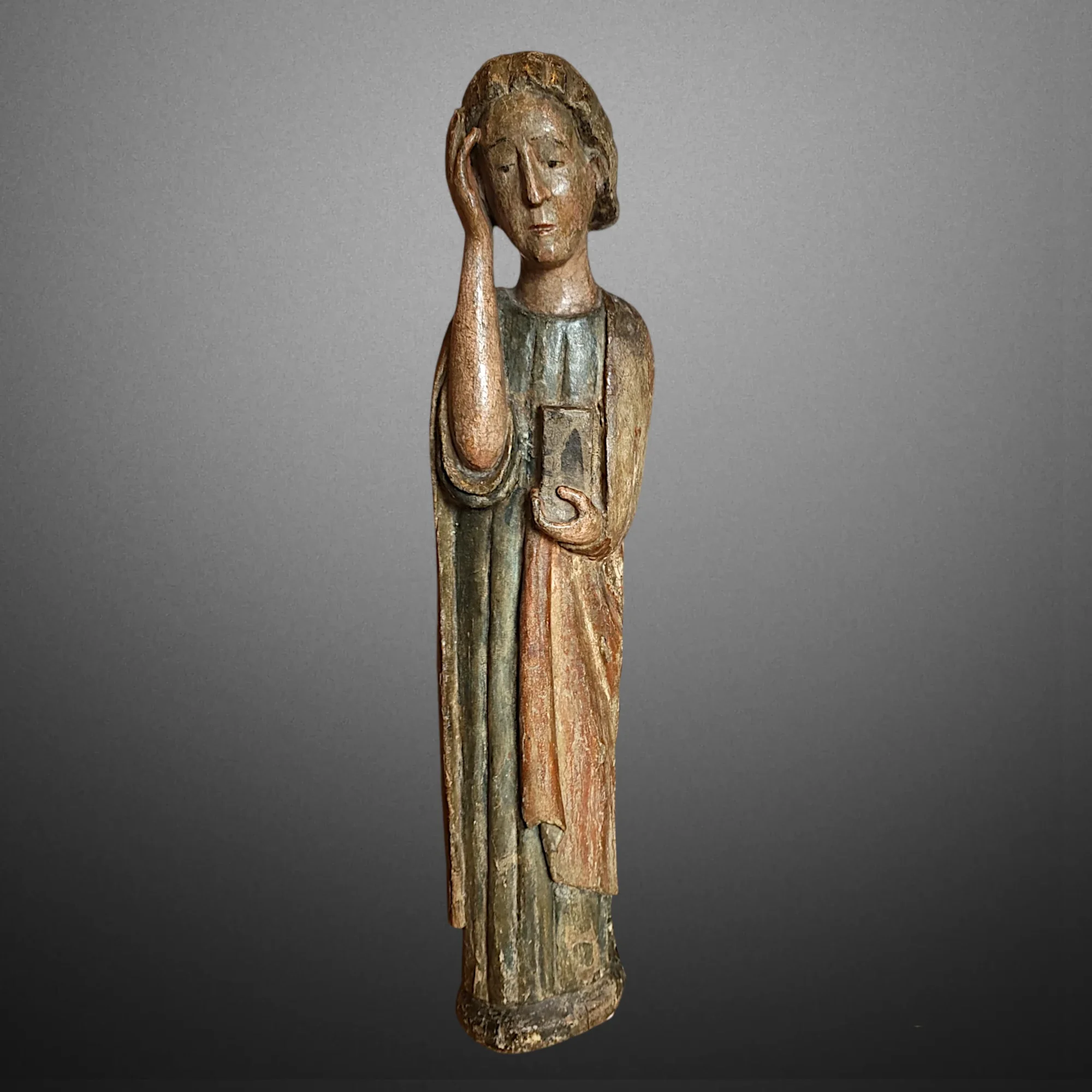Back to the artwork ref.264
Switch to full screen mode
Exit full screen mode

Origin: Mosan region.
Medium: Polychrome wood
Size: 118 cm
Period: 12th century.
Condition: Minor imperfections in the polychromy.
Ref.264
An important and exceptional Saint John at the Calvary. With a slender canon, the saint is dressed in a tunic and a cloak with vertical folds. His face, of great softness, with oval features, slightly drooping eyelids and almond-shaped eyes, expresses deep melancholy. He supports his head with his right hand, while with the other he holds the book of the Gospels. This moving sculpture stands out for its exceptional expressiveness, remarkable execution, and the quality of its original polychromy, admirably preserved. The proportions, stylization of the drapery, and the sober yet precise treatment of the garments place this work at the very end of the 12th century. The elongated style, the treatment of the face, and the verticality of the cloak closely align this sculpture with productions from northern France and, more precisely, the Meuse Valley.
Comparison with a similar Spanish example held at the Cleveland Museum of Art (Inv. 1930.621), dated to the 13th century but with clear echoes of the preceding century, highlights the difference in facial treatment and expression. Our sculpture can be compared to the Saint John of Sens Cathedral (Palissy PM89001150), dated to the 13th century, but especially to the Saint John in the Rietberg Museum (Inv. REU 205), attributed to the late 12th century. Finally, comparison with the Saint John at the Louvre (Inv. RF 3338), dated around 1220 and originating from Hainaut, supports the hypothesis of an origin in northern France or the Mosan region at the end of the 12th century.
Consulted references:
· Jacqueline Lieveaux-Boccador and Édouard Bresset, *Statuaire médiévale de collection*, Vol. I, 1972, pp. 278–280.
· Stéphanie Deschamps-Tan, Pierre-Yves Le Pogam, Clémence Raynaud, *La polychromie des sculptures françaises au Moyen Âge*, 2014